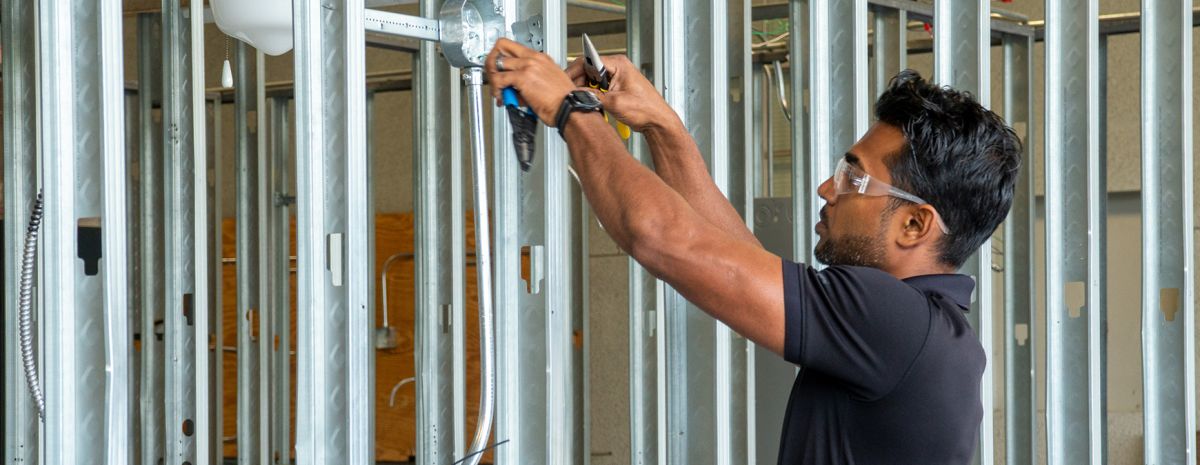RSI is a Great Training Option for Everyone
Learn more about how we can prepare you to advance your career.
The skilled trades are often cast aside as an inferior option when compared to a college education. The school system hasn’t done a good job of equipping students with accurate information about this alternative career path.
What do high schoolers know about the skilled trades?
College is commonly touted as the ideal option for high schoolers following graduation. The unintended consequence of this push is a lack of familiarity with the trades among younger individuals.
A survey conducted by Metal Supermarkets intended to gauge the overall perspective of high schoolers regarding the trades. The findings were telling:
According to the survey, 62% of students were never taught about the skilled trades in high school, and 68% said the option was never mentioned with guidance counselors. When asked about their interest in the trades, 56% said they didn’t have any desire to pursue the career path. In addition, two-thirds of high schoolers said they simply didn’t know enough about the trades to consider it as a potential option.
Common questions high schoolers have about the skilled trades.
Are skilled trades worth it?
Yes, the skilled trades are worth pursuing after high school. Despite college being heralded as the most valuable option, ever-increasing tuition rates, higher levels of competition, and a variety of other negative factors are pushing high schoolers to consider jobs that don’t require a college degree.
Get Started on the Path to a New Career
Fill out our form to learn how we can help you change your life.
Although no job is perfect, many people find that the skilled trades measure up to that description well. However, there’s still some skepticism surrounding their value as a career path when compared to what a college degree can offer. Contrary to what many high schoolers are taught, the skilled trades are a competitive, rewarding, and high-paying career path.
A key advantage the skilled trades have over college is offering a quicker transition to the workforce. Instead of spending four years racking up debt, tradespeople can enter the workforce after joining a vocational program that lasts a maximum of just over a year.
The future prospects for a career in the trades are also promising with demand for these positions expected to continue rising due to a shortage of skilled labor and an increase in manufacturing and construction investments.
What skilled trades are in the highest demand?
The skilled trades are in demand across several industries as businesses struggle to fill the gap created by an aging workforce. The number of unfulfilled skilled jobs is expected to reach 2.1 million by 20230, according to a report by The Manufacturing Institute and Deloitte. This represents a significant demand for skilled professionals in the near-to-long-term future.
When looking at the demand for individual skilled trades, the numbers echo industry-wide findings. Most notably, the national push for green energy has increased the demand for solar panel installers, with positions expected to grow by 52% through 2030.1
Although other skilled trades aren’t experiencing the same boom as solar photovoltaic installers, they’re still expecting respectable growth over the next decade. For example, welders, electricians, and HVAC technicians are expected to see an 8%, 9%, and 5% increase in employment opportunities, respectively.2,3,4
What are the 4 main sectors of skilled trades?
With a better understanding of the value of a skilled trades career, you might be wondering, “What are skilled trades examples?” Since there are hundreds of professions included in the large umbrella of skilled trades, let’s look at the 4 main sectors of the industry overall.
Construction – When people think of skilled trades, their minds immediately picture construction-related work which is one of the biggest employers in the market. Welders, pipefitters, carpenters, and electricians are all common examples of construction trade careers.
Manufacturing – Right up there with construction, manufacturing is a major employer of skilled tradespeople in a variety of positions including industrial mechanics, metal fabricators, and welders.
Transportation – If you’ve ever taken your vehicle to get fixed up, you’ve benefited from the skills of a transportation tradesperson. Some typical roles in this field include car mechanics, motorcycle mechanics, and heavy-duty equipment technicians.
Service – Trades involving a customer-oriented service such as bricklayers, landscapers, and residential HVAC technicians are all examples of service skilled trades.
As you might’ve noticed, there’s some overlap between these categories. These divisions aren’t set in stone. Instead, they’re intended to give newcomers to the field a better understanding of the various positions included in the realm of skilled trades.
How many women work in the skilled trades?
Currently, more than a quarter of a million women work in the skilled trades. These 250,000 women represent around 3.4% of the industry workforce overall.5
Many vocational programs and employers are looking to increase their diversity by seeking out qualified and talented female trades professionals. These trends are supported by the numbers as many skilled trades were among the only industries that saw an increase in female employment following the troubling COVID-19 pandemic.5
There are plenty of high-paying and rewarding trades jobs for women out there. It’s just a matter of finding what matches your personal preferences and strengths.
Join a vocational program to kickstart your trade career.

The skilled trades are an excellent career path for high school graduates who are looking for an alternative to college either to save money or speed up the school-to-work transition. The best way to launch a successful career in the skilled trades is by joining a committed vocational program where you develop the specific knowledge and abilities required to work in the field. Read about some ways you can plan for long-term success in the trades to get started on the right foot.
Additional Sources
1https://www.bls.gov/ooh/construction-and-extraction/solar-photovoltaic-installers.htm
2https://www.bls.gov/ooh/production/welders-cutters-solderers-and-brazers.htm#tab-6
3https://www.bls.gov/ooh/construction-and-extraction/electricians.htm#tab-6
4https://www.bls.gov/ooh/installation-maintenance-and-repair/heating-air-conditioning-and-refrigeration-mechanics-and-installers.htm#tab-6
5https://tradeswomen.org/
This blog has been labeled as archived as it may no longer contain the most up-to-date data. For a list of all current blog posts, please visit our blog homepage at https://www.rsi.edu/blog/




